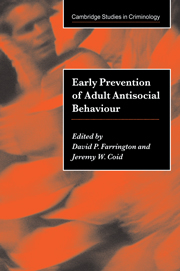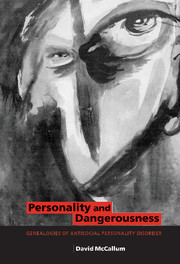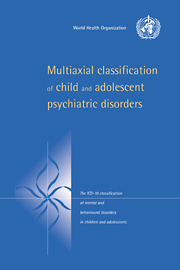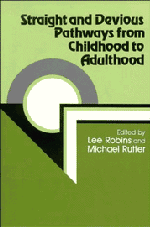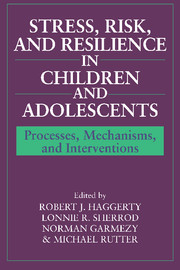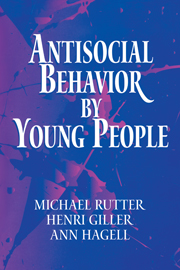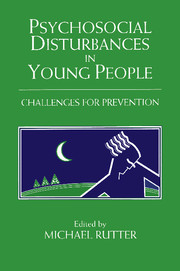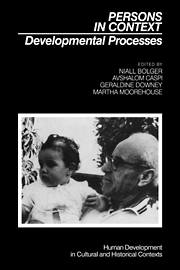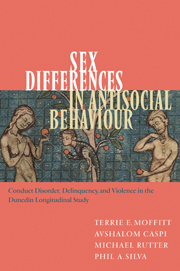
Sex Differences in Antisocial Behaviour
Conduct Disorder, Delinquency, and Violence in the Dunedin Longitudinal Study
Part of Cambridge Studies in Criminology
- Authors:
- Terrie E. Moffitt, University of London
- Avshalom Caspi, University of London
- Michael Rutter, University of London
- Phil A. Silva, University of Otago, New Zealand
- Date Published: November 2001
- availability: Available
- format: Paperback
- isbn: 9780521010665
Paperback
Other available formats:
Hardback, eBook
Looking for an inspection copy?
Please email [email protected] to enquire about an inspection copy of this book
-
Why are females rarely antisocial and males antisocial so often? This key question is addressed in a fresh approach to sex differences in the causes, course and consequences of antisocial behaviour. The book presents findings from a landmark investigation of 1,000 males and females studied from ages 3 to 21 years. It shows that young people develop antisocial behaviour for two main reasons. One form of antisocial behaviour is a neurodevelopmental disorder afflicting males, with low prevalence in the population, early childhood onset and subsequent persistence. The other form of antisocial behaviour, afflicting females as well as males, is common and emerges in the context of social relationships. The book offers insights about diagnosis and measurement, the importance of puberty, the problem of partner violence and the nature of intergenerational transmission. It puts forward an agenda for research about both neurodevelopmental and social influences on antisocial behaviour.
Read more- Provides insights into the impact of sex differences on the causes and consequences of antisocial behaviour
- Presents findings from the Dunedin Longitudinal Study
- Written by a multidisciplinary team from criminology, psychiatry and developmental psychology
Reviews & endorsements
'The book leaves one with a strong sense of the interconnectedness of genders and generations in the patterns of antisocial behaviour.' Young Minds Magazine
See more reviews'This book is an excellent example of empirically grounded research in developmental psychopathology … Overall, the book will appeal to a wide readership, from students to seasoned investigators … It asks questions and probes data in a way that truly advances science.' Journal of Child Psychology and Psychiatry
'This study has considerable significance both for our understanding of the roots of antisocial behaviour and in the planning of preventive interventions … It is beautifully written and the findings presented with model clarity. … A particularly attractive feature is a succinct summary of the findings at the end of each chapter and list of related questions that remain for investigators to address. Anyone researching into or developing policies for antisocial children should have access to this book … Clinicians will also find it of great value. The findings will be quoted for many years to come.' European Child and Adolescent Psychiatry
'This book provides a riveting description of part of a longitudinal study that took place over two decades with a cohort of 1,000 males and females living in Dunedin in New Zealand … This is an important book in terms of its focus, its careful reporting of key findings and its suggestion for further research … In summary, the book is a very satisfying and disturbing read.' Journal of Family Studies
'Students of antisocial behaviours concerned with the most robust predictor of crime and violence - sex - have reasons to rejoice: A group of leading experts in the field have published a book entirely dedicated to this topic. … It is required reading for all those interested in antisocial behaviour in children and youth … new students in the field will find an invaluable guide into current research questions and the analytical and methodological strategies to answer them.' Sylvana Coté
'This book provides an in-depth and thought-provoking analysis of the Dunedin longitudinal study (New Zealand) into adolescent sex differences in antisocial behaviour. … [It] is recommended for specialist academic workers in the field of delinquency such as youth offending team workers, the police and multi-agency locality workers. It would also be useful for academic researchers and research assistants, as a guide to writing up research and may be useful for the library of psychologists who specialise in this type of work.' Tim Maxwell, Somerset Educational Psychology Service
'… the book addresses an anomaly that has arisen from two facts about antisocial behaviour which, when considered together, distinguish antisocial behaviour from depression, anxiety, ADHD, autism and other disorders of childhood, namely that there is a male preponderance in antisocial behaviour, and that there is a large increase in antisocial behaviour during adolescence … the book comes to a powerful conclusion … that the more severe, early-onset presentation of antisocial behaviour that is typical of only 5% of males is associated with neuro-cognitive features with probable strong genetic and biological influences. By contrast, females' antisocial involvement tends to fluctuate more according to circumstances and therefore is more influenced by social factors, notably the socialization influences by male peers … Through its sound methodology and clear description of method and rationale, this must-read book is appropriate for established researchers and/or students interested in prediction studies of the childhood correlates of later health and behaviour outcomes, developmental studies of continuity and change in health and behaviour, and epidemiological studies of the prevalence and incidence of health problems and behaviour problems.' Carla Sharp, Psychological Medicine
Customer reviews
Not yet reviewed
Be the first to review
Review was not posted due to profanity
×Product details
- Date Published: November 2001
- format: Paperback
- isbn: 9780521010665
- length: 300 pages
- dimensions: 228 x 153 x 22 mm
- weight: 0.475kg
- contains: 2 b/w illus. 28 tables
- availability: Available
Table of Contents
List of figures
List of tables
Preface
Acknowledgements
1. Introduction
2. The Dunedin Multidisciplinary Health and Development Study
3. Sex differences in the amount of antisocial behaviour: dimensional measures
4. Sex differences in the prevalence of antisocial behaviour: categorical diagnostic measures
5. Sex differences in physical violence and sex similarities in partner abuse
6. Sex and the developmental stability of antisocial behaviour
7. Sex and the age of onset of delinquency and conduct disorder
8. Sex effects in risk predictors for antisocial behaviour: are males more vulnerable than females to risk factors for antisocial behaviour?
9. Sex effects in risk predictors for antisocial behaviour: are males exposed to more risk factors for antisocial behaviour?
10. Can sex differences in personality traits help to explain sex differences in antisocial behaviour?
11. Sex and comorbidity: are there sex differences in the co-occurrence of conduct disorder and other disorders?
12. Do girls who develop antisocial behaviour surmount a higher threshold of risk than their male counterparts?
13. Sex differences in the effects of antisocial behaviour on young adult outcomes
14. Sex, antisocial behaviour and mating: mate selection and early childbearing
15. Evaluating the recommendation to relax the criteria for diagnosing conduct disorder in girls
16. Life-course persistent and adolescence-limited antisocial behaviour among males and females
17. Priorities for a research agenda
References
Index.
Sorry, this resource is locked
Please register or sign in to request access. If you are having problems accessing these resources please email [email protected]
Register Sign in» Proceed
You are now leaving the Cambridge University Press website. Your eBook purchase and download will be completed by our partner www.ebooks.com. Please see the permission section of the www.ebooks.com catalogue page for details of the print & copy limits on our eBooks.
Continue ×Are you sure you want to delete your account?
This cannot be undone.
Thank you for your feedback which will help us improve our service.
If you requested a response, we will make sure to get back to you shortly.
×
